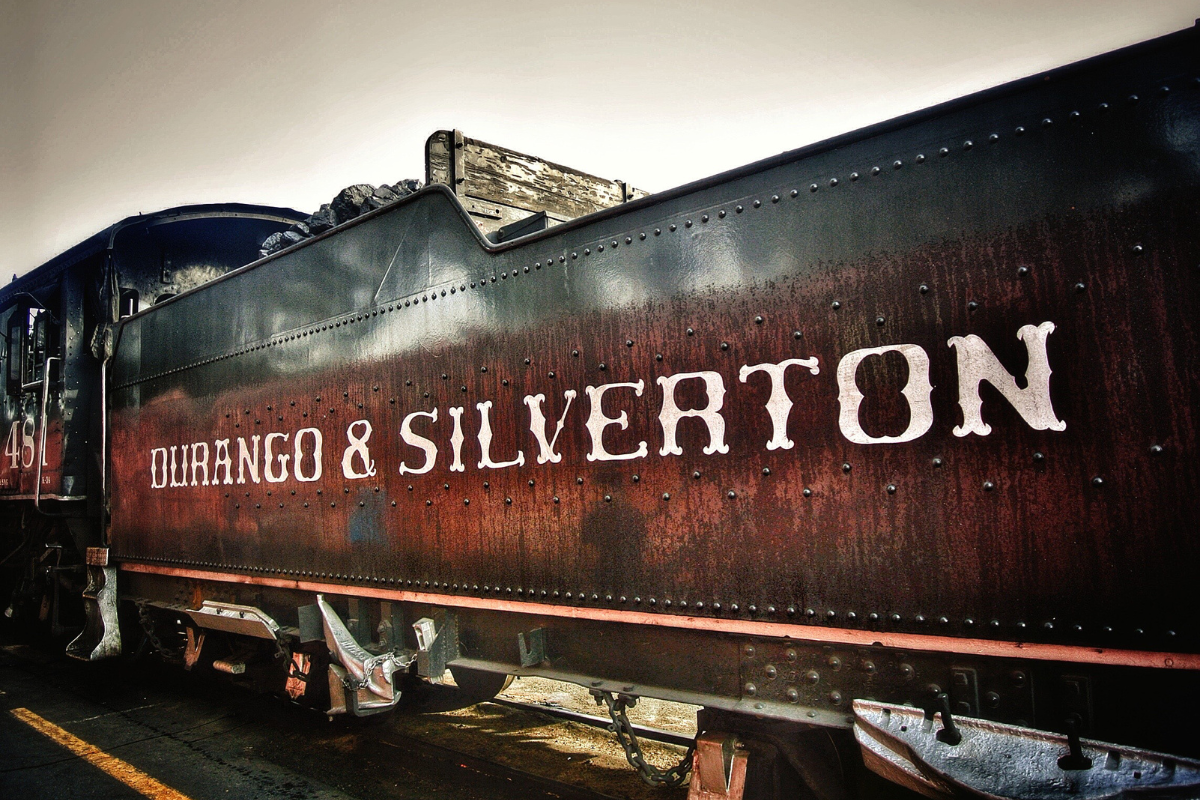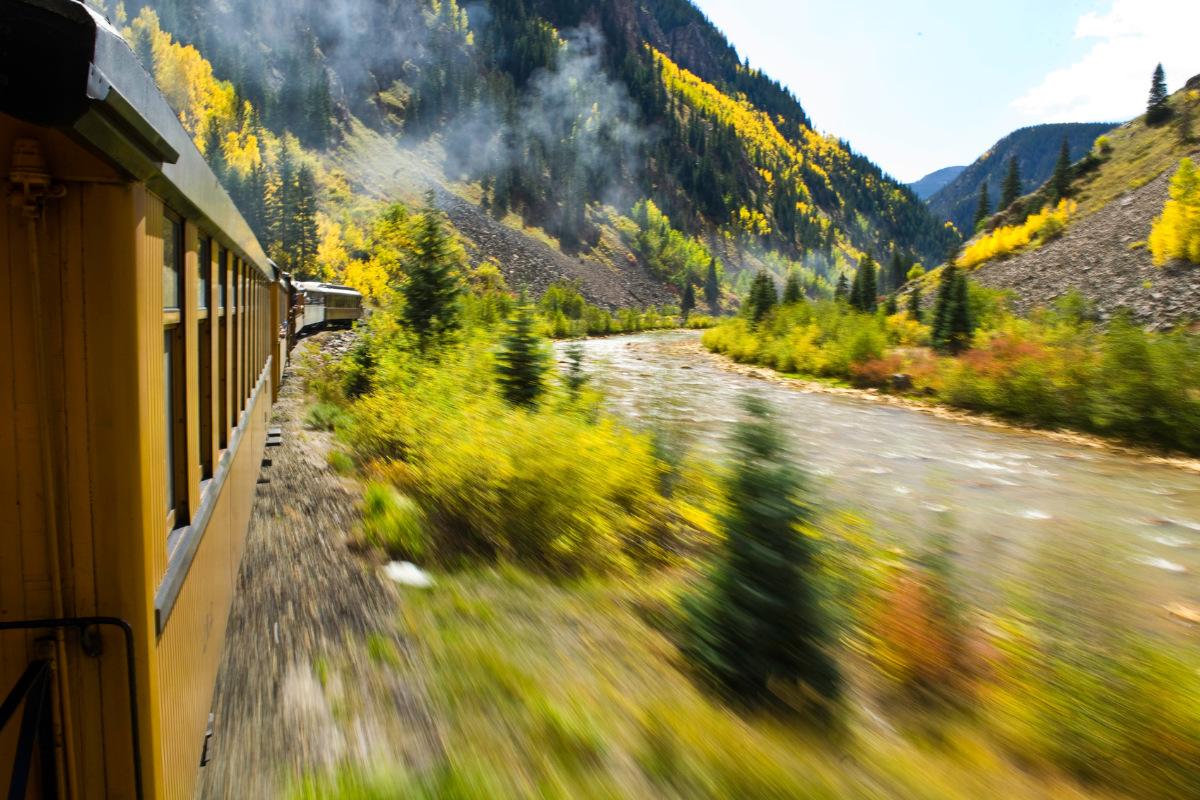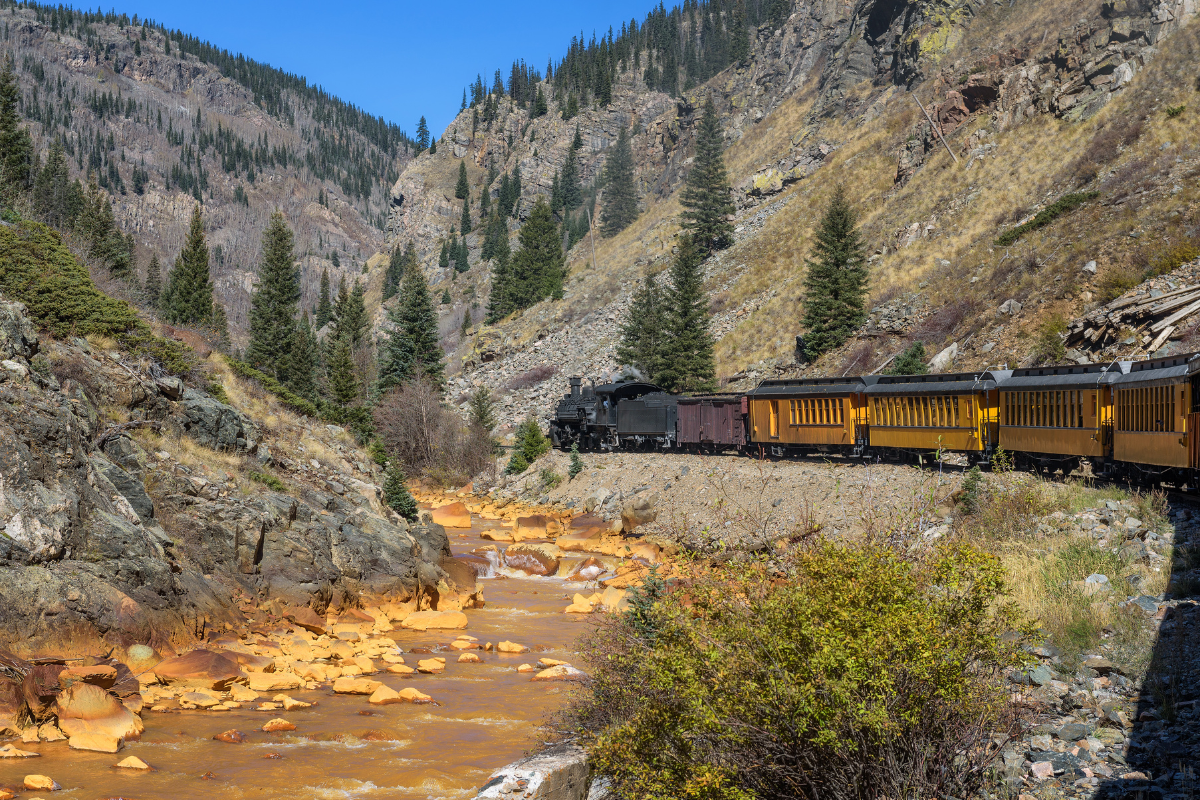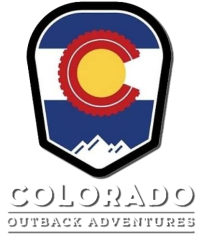HISTORY OF THE DURANGO TRAIN
Cutting through the rugged mountains of Southwest Colorado, the Durango & Silverton Narrow Gauge Railroad stands as a living testament to the pioneering spirit of the American West. This iconic railroad has been a vital part of Durango’s history since the late 19th century, and today, it continues to offer passengers an unforgettable journey through some of the most stunning landscapes in the United States.

The Beginnings: A Railroad to Riches
The story of the Durango & Silverton Narrow Gauge Railroad begins in the late 1800s during the height of the American mining boom. In 1881, the Denver & Rio Grande Railway (D&RG) laid the tracks from Durango to Silverton, primarily to transport silver and gold ore from the San Juan Mountains. The railroad was constructed with a narrow gauge, meaning the rails were set closer together (three feet apart instead of the standard four feet, eight and a half inches). This design allowed the trains to navigate the sharp curves and steep grades of the rugged mountain terrain more efficiently.
Construction of the railroad was a monumental feat, requiring workers to carve through rock, build trestles over deep gorges, and brave the harsh conditions of the San Juan Mountains. Despite these challenges, the railroad was completed in just 11 months, a testament to the determination and ingenuity of the workers.

The Golden Age: A Lifeline for Mining Towns
Once completed, the railroad quickly became the lifeline for the remote mining towns of Silverton and Durango. Trains transported not only precious metals but also supplies and people, helping to fuel the economic growth of the region. The line became an essential part of daily life, connecting these isolated communities to the outside world and facilitating their development.
During the late 19th and early 20th centuries, the Durango & Silverton Railroad played a pivotal role in the mining industry. At its peak, the railroad carried hundreds of thousands of tons of ore annually, helping to make Colorado one of the nation’s leading producers of silver and gold. The prosperity brought by the railroad also spurred the growth of Durango, transforming it from a small outpost into a thriving hub of commerce and culture.

Surviving the Test of Time: From Decline to Revival
As the mining industry began to decline in the early 20th century, so too did the fortunes of the Durango & Silverton Railroad. The demand for ore transportation dwindled, and many of the once-booming mining towns became ghost towns. By the 1950s, the railroad faced the very real threat of closure, as passenger and freight services declined dramatically.
However, a new chapter in the railroad’s history was about to begin. Recognizing the historical significance and scenic beauty of the route, the Denver & Rio Grande Western Railroad (successor to the original D&RG) began promoting the line as a tourist attraction. In 1961, the Durango & Silverton Railroad was designated a National Historic Landmark, cementing its place in American history.
The railroad was sold to private owners in the 1980s, who continued to develop its tourism potential. Today, the Durango & Silverton Narrow Gauge Railroad operates year-round, offering visitors a chance to experience the magic of rail travel through the breathtaking landscapes of the San Juan Mountains.

Riding the Rails Today: A Journey Back in Time
Today, riding the Durango & Silverton Narrow Gauge Railroad is like stepping back in time. The train’s vintage steam locomotives and carefully restored passenger cars evoke the golden age of rail travel. As the train chugs along the narrow tracks, passengers are treated to unparalleled views of rugged canyons, towering peaks, and pristine rivers. The journey from Durango to Silverton is a 45-mile trip that takes about 3.5 hours each way, offering ample time to soak in the scenery and the history.
The railroad offers a variety of experiences, from standard-class seats to luxurious parlor cars, ensuring that every passenger can enjoy the ride in comfort. Special excursions, such as winter trains and themed rides, add to the charm and allure of the experience.
For those interested in a deeper dive into the railroad’s history, the Durango & Silverton Narrow Gauge Railroad Museum, located in Durango, offers a fascinating collection of artifacts, photographs, and exhibits that chronicle the railroad’s rich legacy.

A Legacy of Adventure
The Durango & Silverton Narrow Gauge Railroad is more than just a mode of transportation; it’s a living piece of history, a symbol of the enduring spirit of the American West. From its early days as a lifeline for mining communities to its modern role as a beloved tourist attraction, the railroad has remained a vital part of Durango’s identity.
Whether you’re a history buff, a train enthusiast, or simply someone who appreciates breathtaking scenery, a ride on the Durango & Silverton Narrow Gauge Railroad is an experience you won’t want to miss. It’s a journey that connects you not only to the past but also to the stunning natural beauty of Colorado’s San Juan Mountains. So hop aboard and take a ride through history—Durango’s most iconic adventure awaits!
Have more questions about Durango or want to book one of our guided adventures like Durango white water rafting, Jeep rentals, or UTV rentals? Give us a call, we’re happy to help you make the most of your Colorado adventure.
